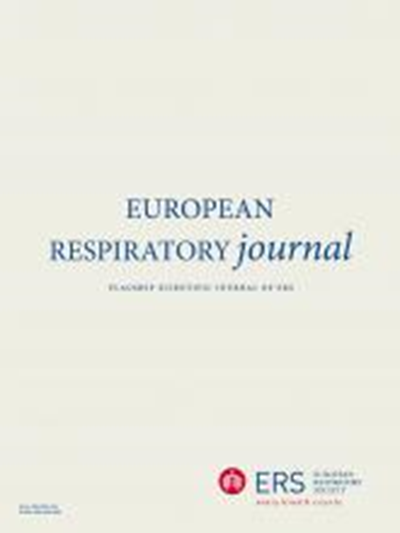颗粒物质相关的ITIH4缺乏通过jnk依赖性和jnk非依赖性信号与慢性阻塞性肺疾病的肺气肿表型相关。
IF 16.6
1区 医学
Q1 RESPIRATORY SYSTEM
引用次数: 0
摘要
理由:长期暴露于空气中的颗粒物(PM)与肺气肿和慢性阻塞性肺疾病(COPD)有关;然而,确切的潜在机制仍不清楚。目的:在之前的高通量筛选中,我们确定了α -胰蛋白酶间抑制剂重链4 (ITIH4)作为长期PM暴露的生物标志物。我们假设ITIH4与pm相关的肺气肿有关。方法通过临床队列分析(220名COPD患者和61名健康参与者)和体外研究,研究了ITIH4表达与环境PM暴露之间的关系。COPD队列研究显示肺气肿严重程度、环境PM暴露和血清ih4水平之间存在显著相关性。在ITIH4基础水平较低的COPD患者的原发性小气道上皮细胞中,暴露于PM和氧化应激可导致细胞凋亡增加。然而,ITIH4过表达显著抑制氧化应激诱导的正常和COPD气道上皮细胞凋亡。急性过氧化氢暴露导致ITIH4蛋白快速降解,但对转录水平没有影响,尽管ITIH4基因在COPD患者肺组织中的表达下调。人凋亡抗体阵列显示,ITIH4过表达减弱了过氧化氢诱导的凋亡信号。此外,细胞外ITIH4蛋白在暴露于PM或氧化应激的细胞中具有细胞保护功能。在机制上,ITIH4减弱氧化应激诱导的JNK活化和β-catenin的减少。缺乏ITIH4加剧了氧化应激的影响。结论:我们发现了一种涉及ih4的新的发病机制,其中慢性暴露于空气污染诱导或促进肺气肿。本文章由计算机程序翻译,如有差异,请以英文原文为准。
Particulate matter-related ITIH4 deficiency is associated with an emphysema phenotype of chronic obstructive pulmonary disease through JNK-dependent and JNK-independent signaling.
RATIONALE
: Prolonged exposure to airborne particulate matter (PM) is associated with emphysema and chronic obstructive pulmonary disease (COPD); however, the precise underlying mechanism remains unclear.
OBJECTIVES
In a previous high-throughput screen, we identified inter-alpha-trypsin inhibitor heavy chain 4 (ITIH4) as a biomarker of long-term PM exposure. We hypothesized that ITIH4 is implicated in PM-related emphysema.
METHODS
We investigated the association between ITIH4 expression and ambient PM exposure through a clinical cohort analysis (220 patients with COPD and 61 healthy participants) and in vitro studies.
MEASUREMENTS AND MAIN RESULTS
The COPD cohort studies revealed significant correlations between emphysema severity, ambient PM exposure, and serum ITIH4 levels. In primary small airway epithelial cells from COPD patients with low basal levels of ITIH4, exposure to PM and oxidative stress led to increased apoptosis. However, ITIH4 overexpression significantly inhibited oxidative stress-induced apoptosis in normal and COPD airway epithelial cells. Acute exposure to hydrogen peroxide resulted in the rapid degradation of ITIH4 protein with no effect on transcriptional level, although ITIH4 gene expression is downregulated in the lung tissue of patients with COPD. A human apoptosis antibody array revealed that ITIH4 overexpression attenuated hydrogen peroxide-induced apoptotic signaling. Furthermore, extracellular ITIH4 protein confers cytoprotective functions in cells exposed to PM or oxidative stress. Mechanistically, ITIH4 attenuated oxidative stress-induced JNK activation and β-catenin decrease. A deficiency of ITIH4 exacerbated the effects of oxidative stress.
CONCLUSIONS
We identified a novel pathogenetic mechanism involving ITIH4, where chronic exposure to air pollution induces or promotes emphysema.
求助全文
通过发布文献求助,成功后即可免费获取论文全文。
去求助
来源期刊

European Respiratory Journal
医学-呼吸系统
CiteScore
27.50
自引率
3.30%
发文量
345
审稿时长
2-4 weeks
期刊介绍:
The European Respiratory Journal (ERJ) is the flagship journal of the European Respiratory Society. It has a current impact factor of 24.9. The journal covers various aspects of adult and paediatric respiratory medicine, including cell biology, epidemiology, immunology, oncology, pathophysiology, imaging, occupational medicine, intensive care, sleep medicine, and thoracic surgery. In addition to original research material, the ERJ publishes editorial commentaries, reviews, short research letters, and correspondence to the editor. The articles are published continuously and collected into 12 monthly issues in two volumes per year.
 求助内容:
求助内容: 应助结果提醒方式:
应助结果提醒方式:


